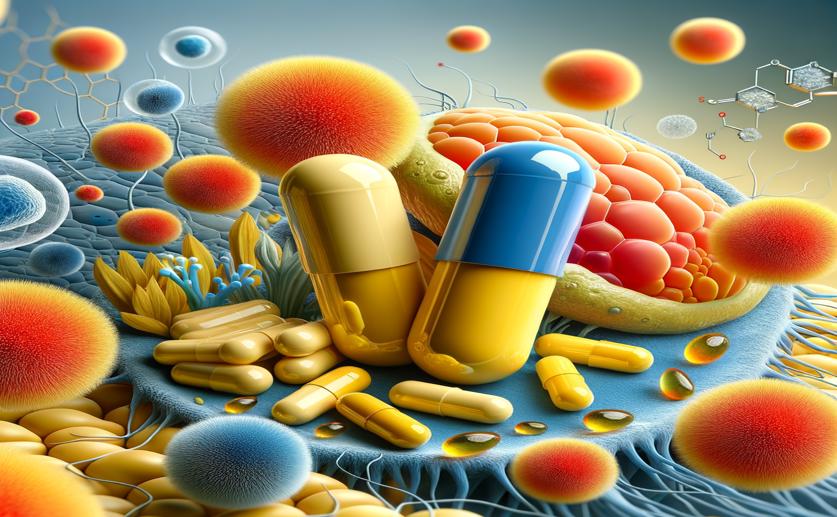
How Berberine Boosts Fluconazole to Fight Drug-Resistant Yeast Infections
Jenn Hoskins
8th June, 2024

Image Source: Natural Science News, 2024
Key Findings
- Researchers at Liuzhou People’s Hospital found that combining berberine (BBR) with fluconazole (FLC) significantly inhibited the growth and biofilm formation of FLC-resistant Candida albicans strains
- The combined treatment downregulated genes responsible for drug resistance and biofilm formation, making the fungal cells more sensitive to fluconazole
- The addition of berberine reduced cell surface hydrophobicity, further decreasing the ability of Candida albicans to form biofilms
References
Main Study
1) Mechanism and bioinformatics analysis of the effect of berberine-enhanced fluconazole against drug-resistant Candida albicans
Published 7th June, 2024
https://doi.org/10.1186/s12866-024-03334-0
Related Studies
2) Candida albicans and candidalysin in inflammatory disorders and cancer.
3) Biofilm of Candida albicans: formation, regulation and resistance.
4) Invasive candidiasis: investigational drugs in the clinical development pipeline and mechanisms of action.



 31st March, 2024 | Jim Crocker
31st March, 2024 | Jim Crocker